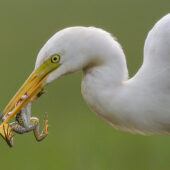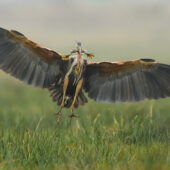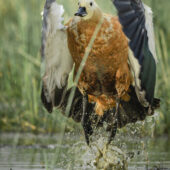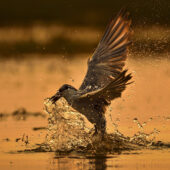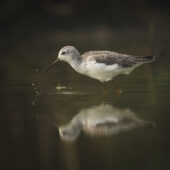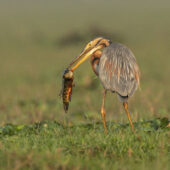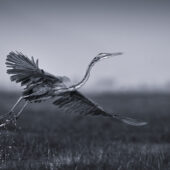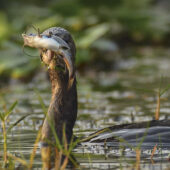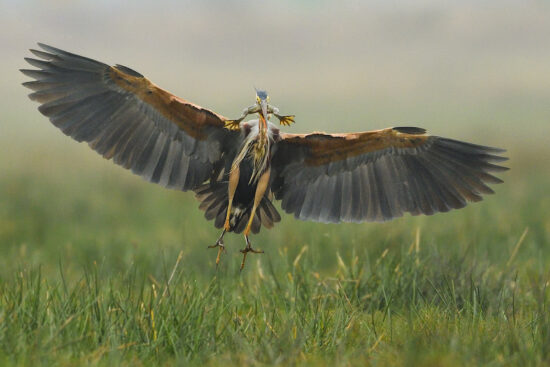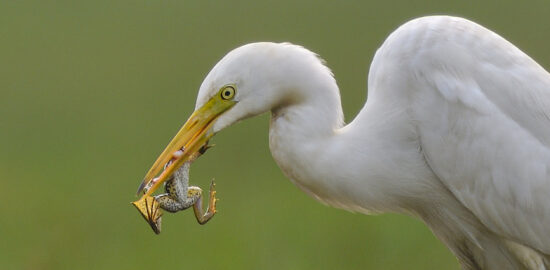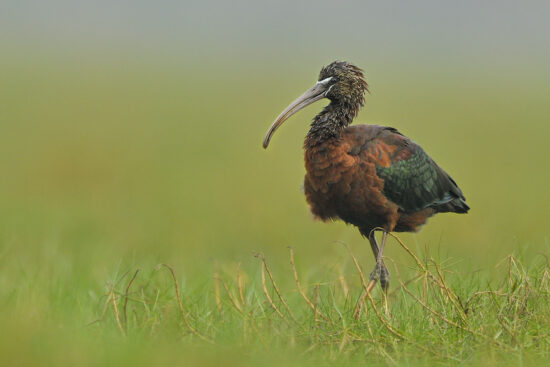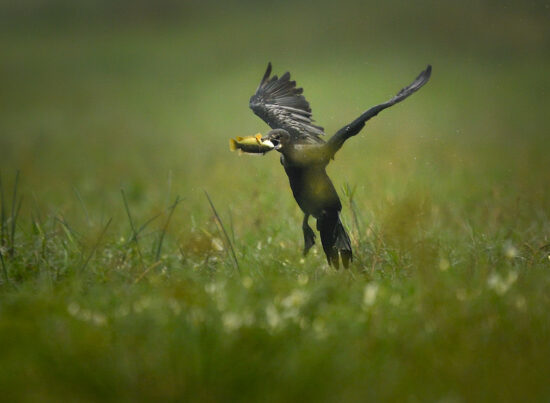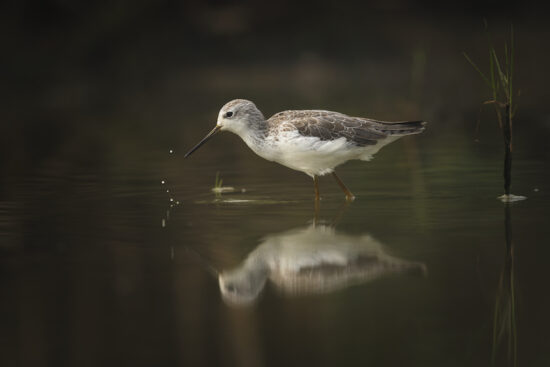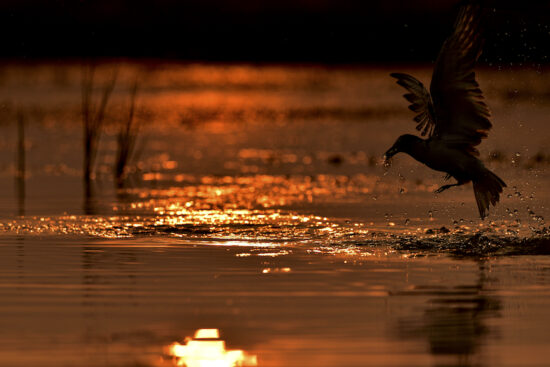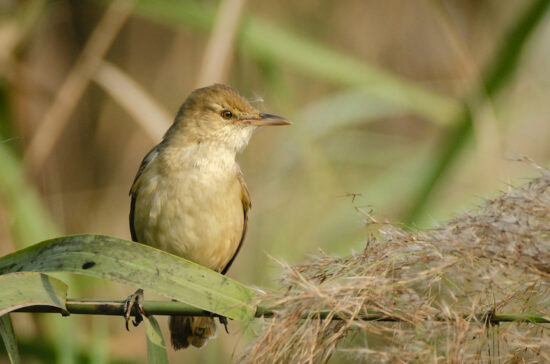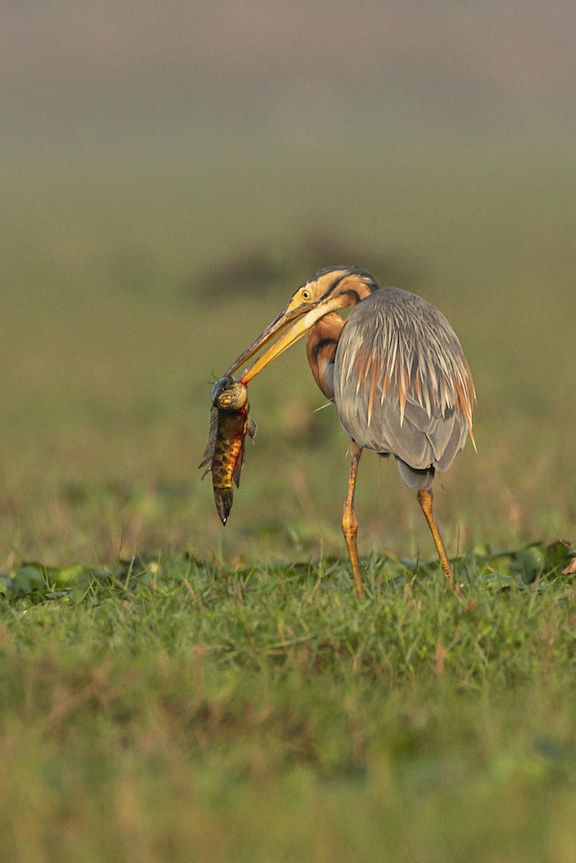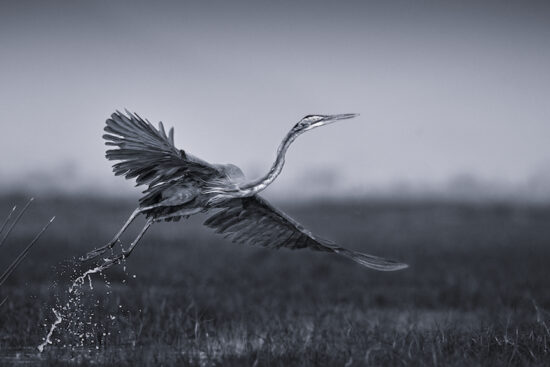Manglajodi: A paradise for bird action by Soumya Ranjan Bhattacharyya (Instagram):
I have been going back to Manglajodi wetlands for the past five years during the months of January-February for bird action photography and one thing I can tell you is that the going gets better and better each year. Situated in the northeastern edge of the Chilika lake in a place called Tangi in the Khorda district of Odhisa, India the Manglajodi wetlands is a vast area which gets inundated each year from the Chilika lake during the monsoon. The flooding marshland attracts millions of migratory and local waterbirds and passerines each year including bar tail godwits, water fowls like northern pintail, northern shoveler, ruddy shelduck, gargeny, gadwal, grey lag goose, grebes, grey-headed swamphen, moorhens, water-cock, black headed ibis, herons, egrets and passerines like blue throat etc., several raptors like brahmini kite, marsh harrier, pied harrier and peregrine falcon make it their home. The Manglajodi wetland is home to several species of terns and gulls also. Crakes and rails and all sorts of birds of wetland habitat are present here, which makes it a very important conservation site teeming with biodiversity. Not to mention, the wetland habitat is home to fishing cat, jungle cat, jackal and several other mammals.
Being a small fishing village in the fringe of Chilika, poaching of water birds for meat used to be rampant however, this changed in 1997 when Mr. Nanda Kishore Bhujawal, and his NGO team Wild Orissa worked hard in bringing the small fishing community together in efforts of conservation of the wetland, to shun poaching and insinuated in them the value of eco tourism. Slowly the community turned towards eco conservation and this brought back not only millions of birds but also tourists and photographers from all over India. Now there are several small boats that one can hire to photograph the critters in their habitat or simply enjoy the ambience and tranquility that it brings, being so close to nature. Often the tourists are awestruck by the sheer number of birds that one gets to see here.
Since I have been going there in the workshops conducted each year by the Federation of Indian Photography, we usually stay at the Godwit Eco Cottage, which is about 2 kilometers from the wetland, but there are also several other options available like Manglajodi eco tourism resort, and homestays offered by the local boatmen. The boat safaris are conducted early in the morning and in the late afternoon till the evening.
The ride from the hotel to the wetland is by small auto rickshaws that pass through the beautiful village small of Manglajodi which I always found to be spic and span. As you reach the wetland, snaking through road besides the small water inlet, you will be greeted with the sight of vast mud planes with thousands of grey-headed swamp hens roaming around freely. To the left there is a long embankment. There you can often catch glimpse of passerines playing around. Barn swallows make rounds over your head and the trumpeting of groups of greylag goose mark your arrival.
The boat rides are for 2-3 hours, which is enough to photograph several bird species or simply wait for a purple heron or black headed ibis to pull a snake out of the marshes, a grey heron to chase the purple heron or the ibis in question to snatch the food and then a brahmini kite to magically appear out of nowhere and intimidate them. Then you can simply go berserk with your camera. Here I must mention that the boats are typically low fishing boats pulled physically by boatmen. The advantage of this setup is the virtually noiseless safari and absolutely gorgeous eye level shots.
Now coming to my photography gear, I have been using various Nikon Cameras over the years. When I first came to Manglajodi in 2016, I had a simple setup of D7000 paired with a Tamron 150-600 mm first generation lens. Then I upgraded to a D500 and a D750, the lens being the same Tamron 150-600 mm zoom. Currently, I am using a Nikkor 500 mm f4 FL ED lens. This year I paired it with my trusted D500, which has been going strong on me for the last four years; bearing the brunt of heavy usage- showing through bodily scratches and shiny slivers of silver laid bare, but never has it ever given up on me! One thing I must admit is that pairing the exotic 500 prime with my trusty D500 is a joy to behold! Capturing split second action has never been easier. You can really forget about the gear and concentrate on the action around, knowing in your heart that the gear will live up to any challenges thrown at it. The melting creamy bokeh and the lens sharpness is eye watering. This year I also had the chance to use one of my friends 400 mm F2.8 FL ED paired with a 1.4 tc. The combo with my D500 is out of this world. The sharpness of the output and the excellent bokeh made my day and I have photographs to prove just the same. However, what ever be the make and model of your camera, Manglajodi will never disappoint.
Years around, I have captured several bird action shots of flying waterfowls to godwits fighting, tern snatching fish mid air to purple herons struggling with large jeol fishes, frogs, snakes and raptors trying to snatch the catch and some portraits too with excellent bokeh. I would highly recommend visiting Manglajodi if one can. Over the years the number of migratory birds visiting this important wetland have waxed and waned but the chance of capturing excellent bird action has remained just the same.
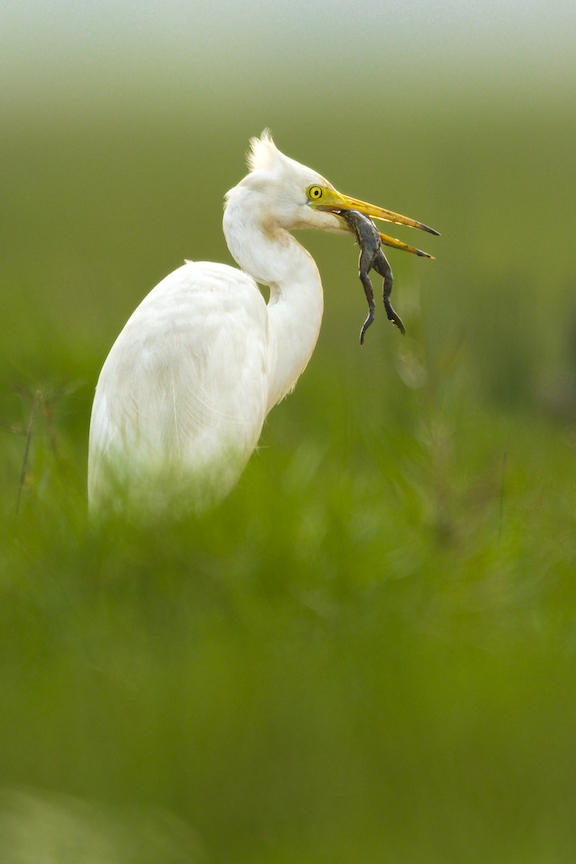
Intermediate egret with frog catch
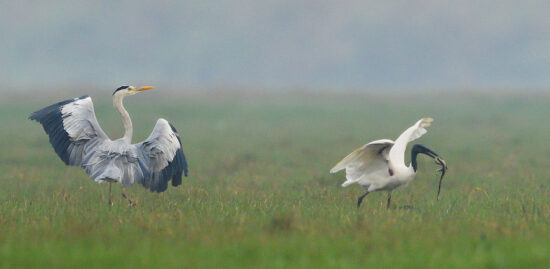
Grey heron chasing a black headed ibis with snake
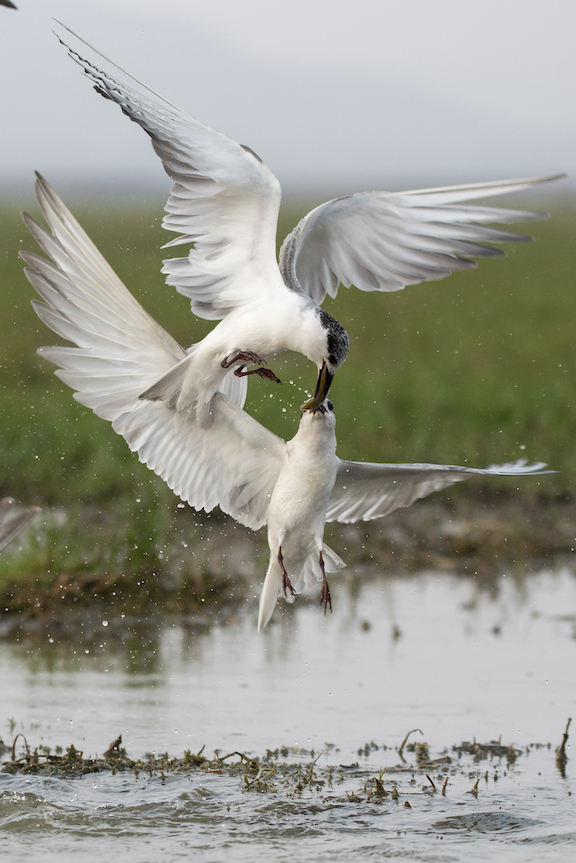
Whiskered tern exchange fish on air
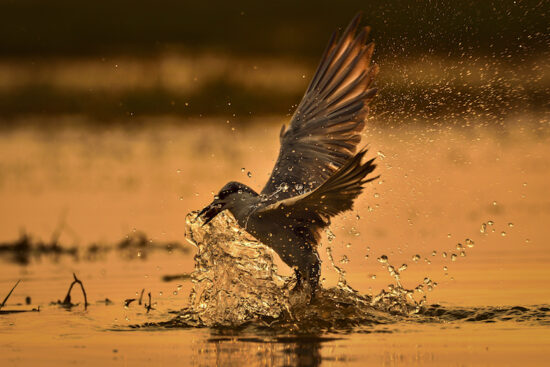
Tern rising from water with fish
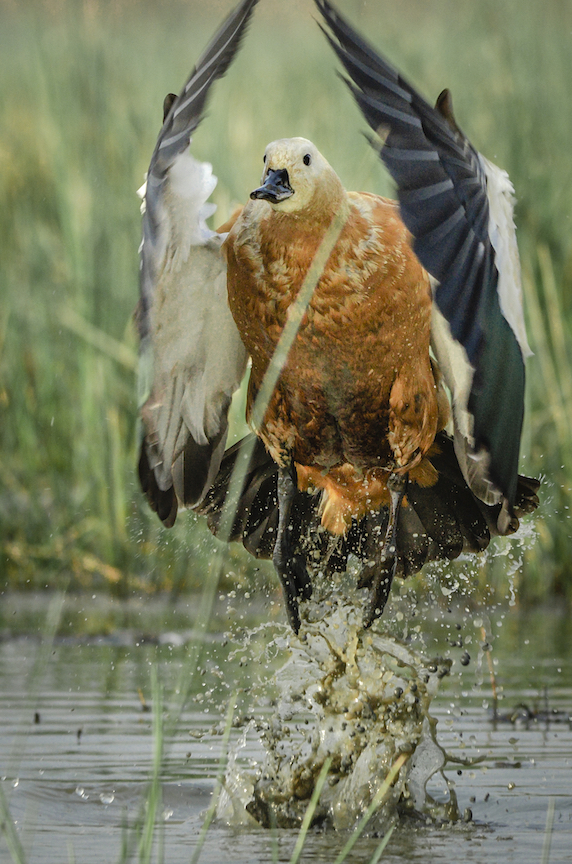
Ruddy shelduck rise from water
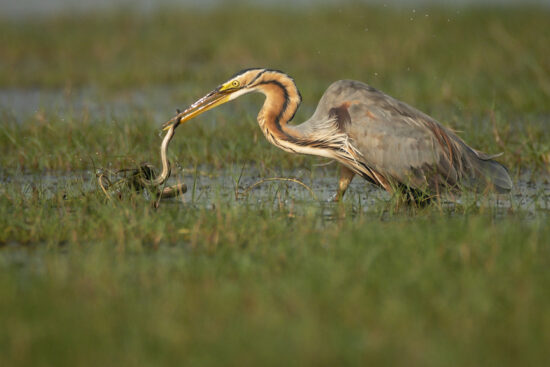
Purple heron pulling a snake out of the swamp

Fishermen catching fish with fish net
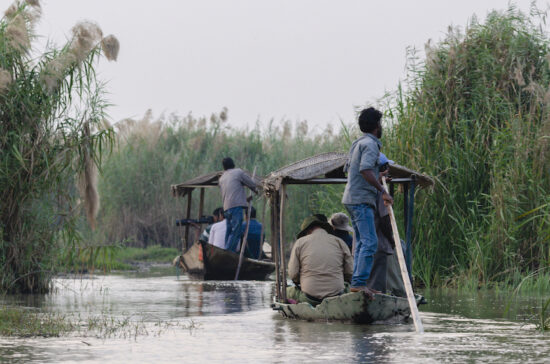
Typical safari boat at Manglajodi
If you have an interesting idea for a guest post, you can contact me here.
